
what you'll learn...
Names of Trigonometric Functions
» Angle specifies a class of similar right-triangles.
→ Any one representative triangle captures the properties of all in the class.
» The representative triangle is chosen in the unit circle.
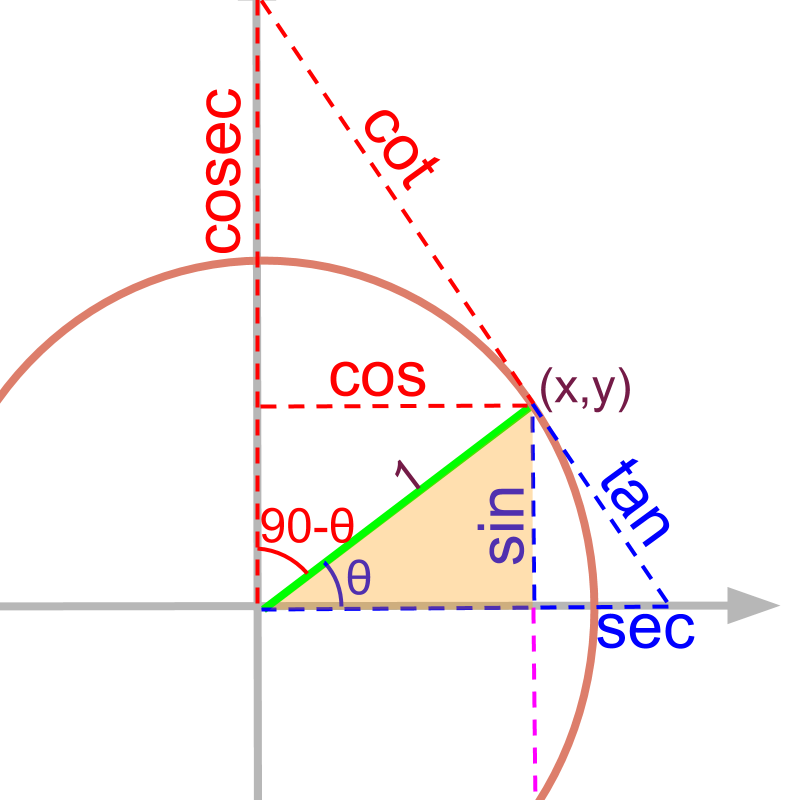 » sine: root word meaning chord.
» sine: root word meaning chord.
» tangent: meaning touching the curve
» secant: meaning cutting through
» complementary: meaning completes to right angle.
» co-sine
» co-tangent
» co-secant
Trigonometric Values Redefined
» Point on unit circle at the given angle
Representative of the class of similar right-triangles
» Projection on y-axis =
→ opposite side in triangle is generalized to the y-coordinate
» Projection on x-axis =
→ adjacent side in triangle is generalized to the x-coordinate
»
y-coordinate of the point on unit circle
»
x-coordinate of the point on unit circle
» and accordingly , , , .
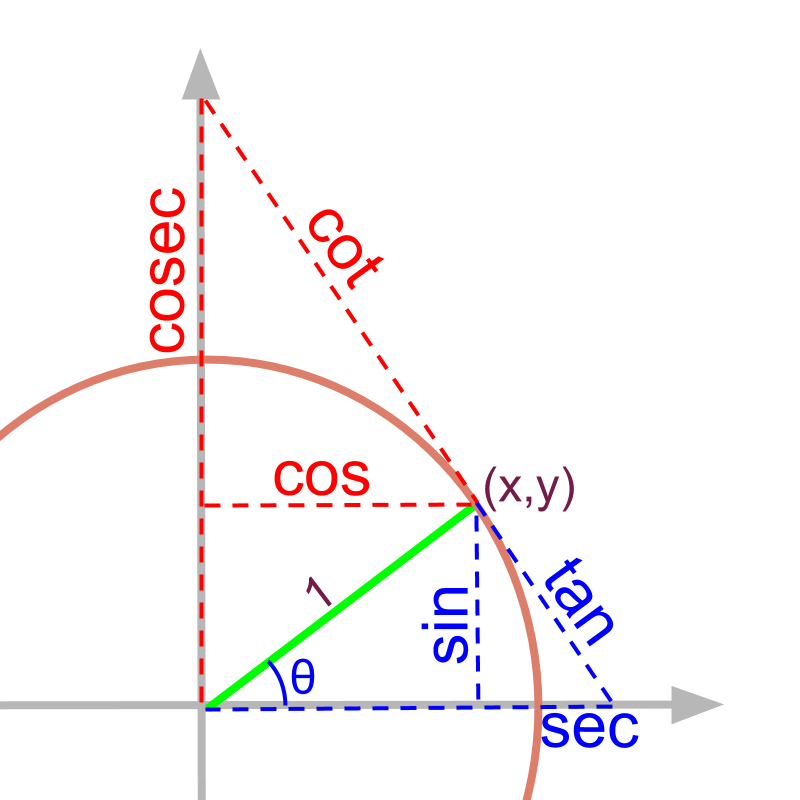
recap
When starting trigonometry, the definitions of trigonometric ratios were explained for right angled triangles.
• sine,
• cosine,
• tan (tangent),
• secant,
• co-secant, and
• cot (co-tangent)
Let us look at a refined definition of the same.
unit circle
A circle with radius unit is called an unit circle.
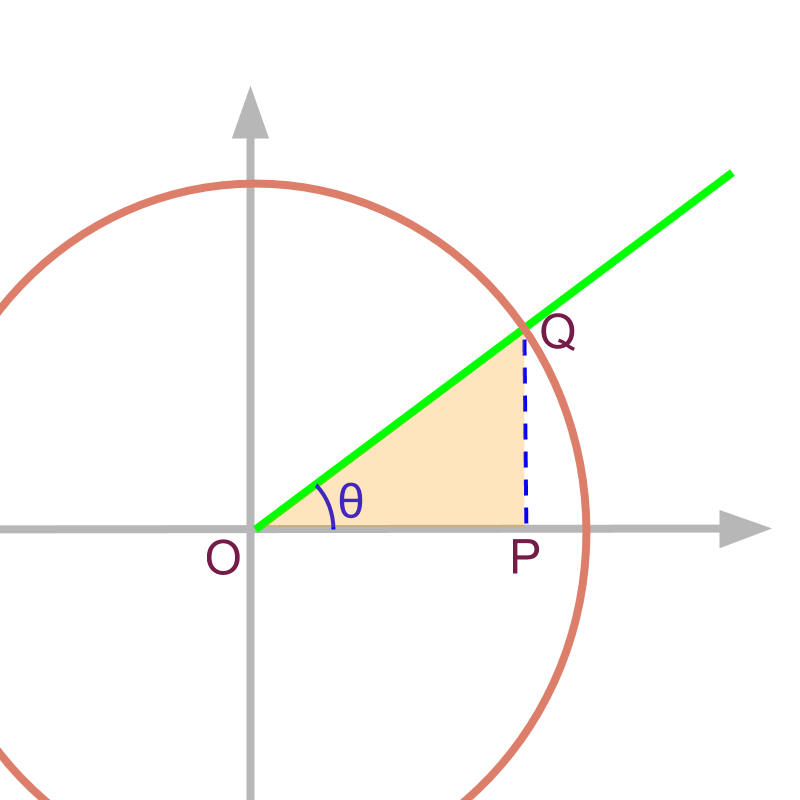
It was explained that trigonometric ratios are defined for set of similar right angled triangles. Consider the right angled triangle made within a unit circle as given in the figure. Any right angled triangle with one angle is represented by the .
The hypotenuse in the given triangle is .
The is the adjacent side and is the opposite side to
chord
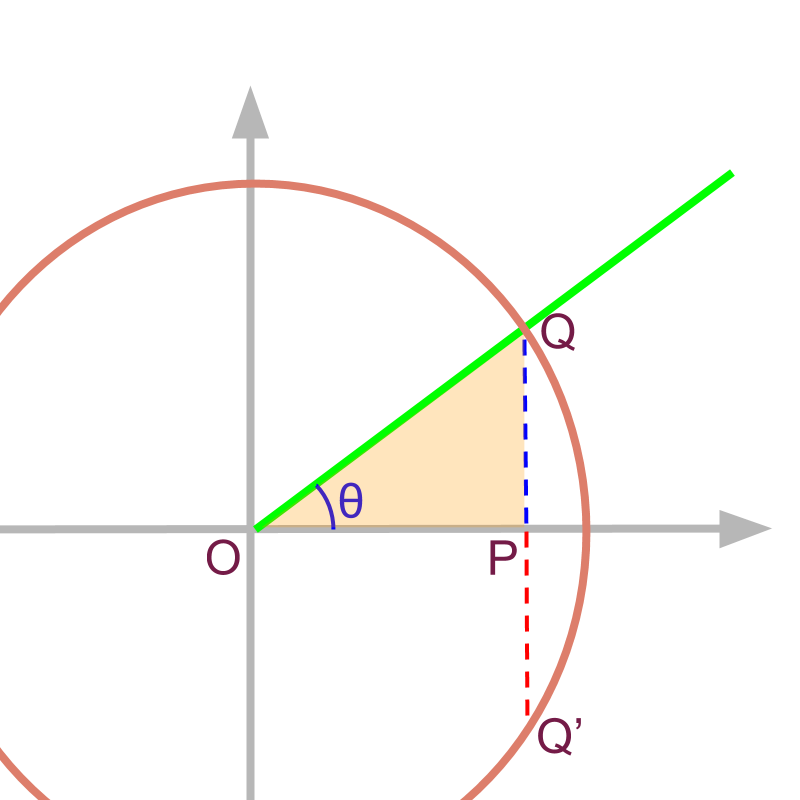
The chord to the circle is .
Note that in the given unit circle .
in the given figure is
The root word of refers to chord of a circle.
For a given angle , the line is half of the chord as shown in figure. So the ratio is named as referring the relation to length of the chord at the given angle.
redefine sine
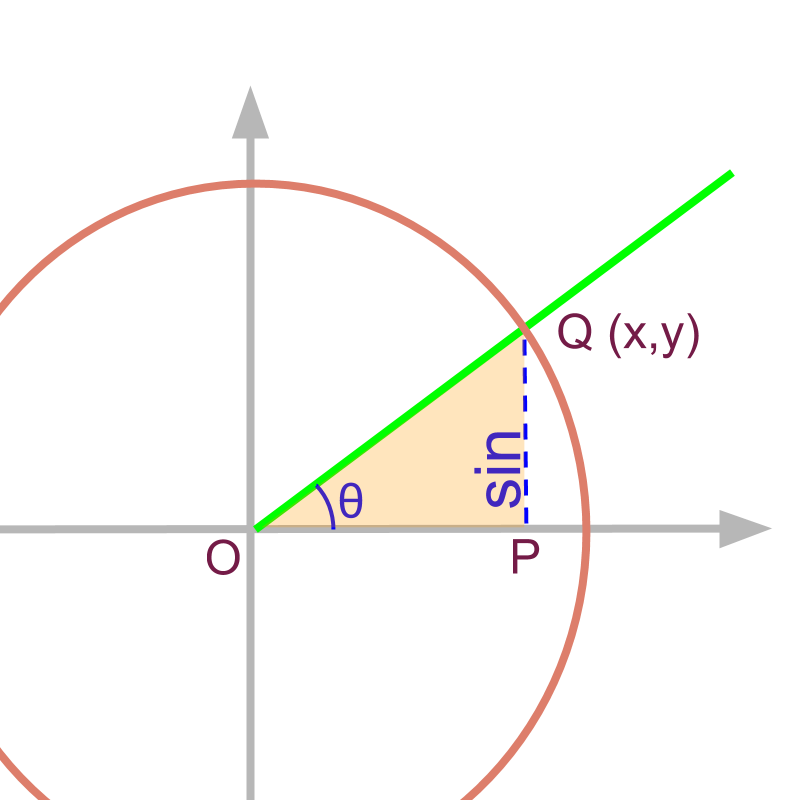
Given that the point is ,
So far, were referred as trigonometric ratios. Considering the unit circle and the point at angle on the unit circle, are referred as trigonometric values.
is the projection on y-axis for the line of unit length at angle .
complementary
The complementary angle of an angle is .
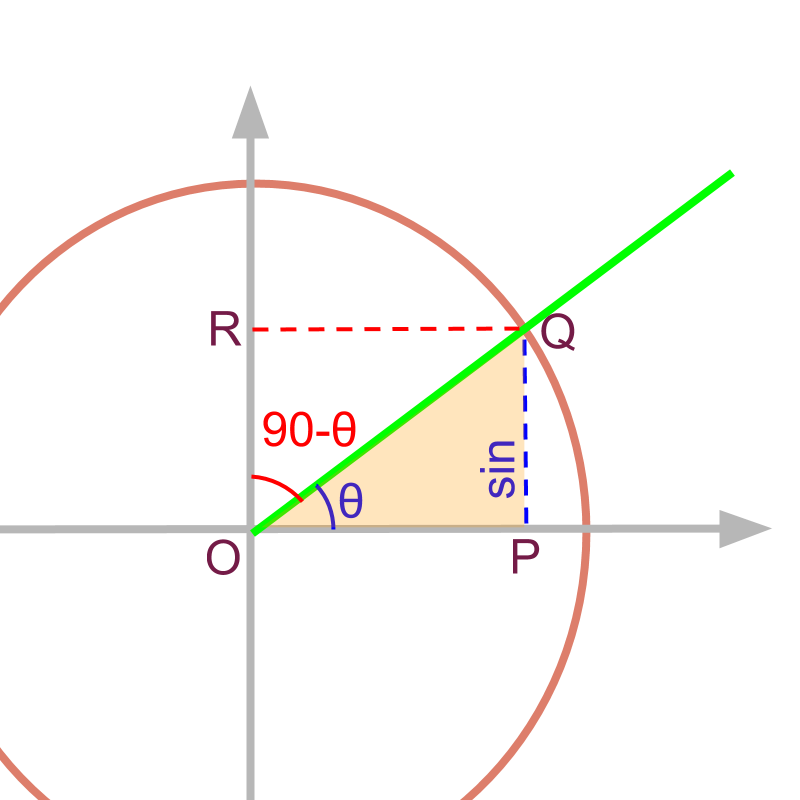
The complementary angle for is .
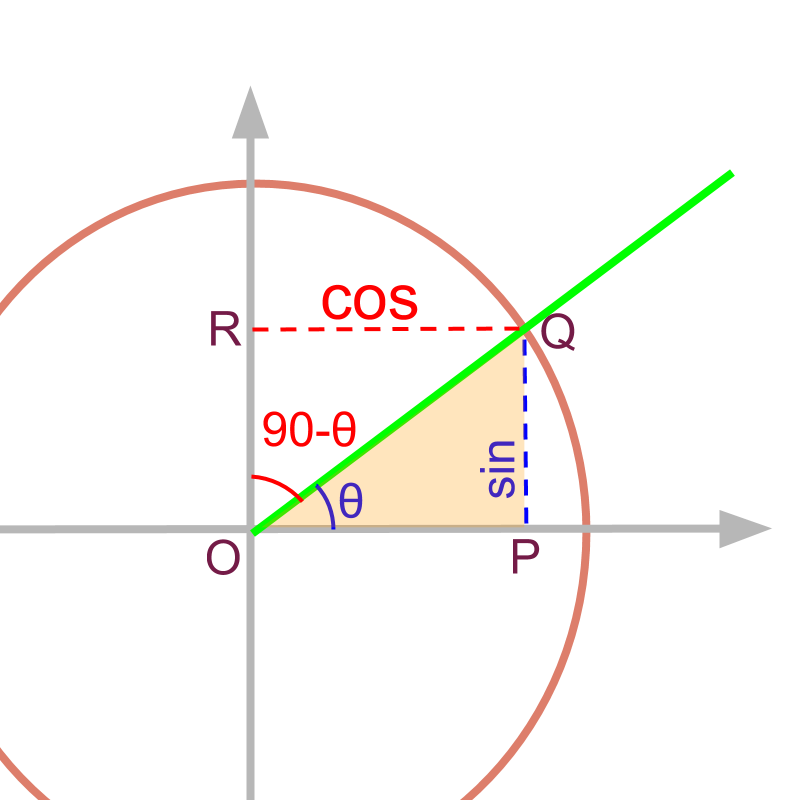
For a given angle , the of complementary angle is or cosine.
co-sine is the short form of 'complementary sine'.
redefine cosine

Given that the point is ,
is the projection on x-axis for the line of unit length at angle .
line touching the circle
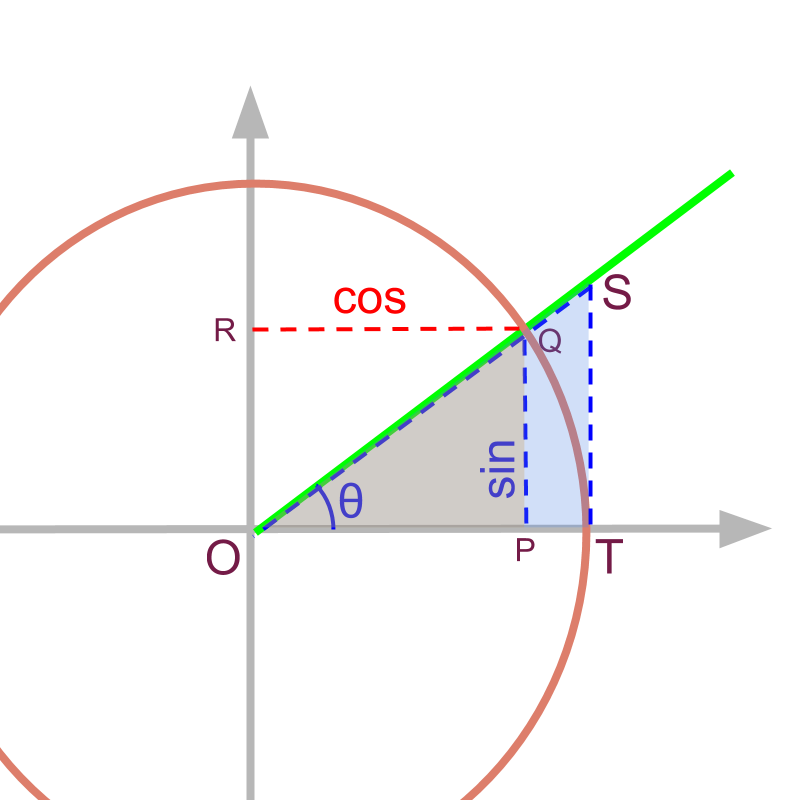
Consider two triangles and . It is noted that is a tangent to the circle.
The triangles and are similar right-angled-triangles. And as it is unit circle.
ratios of sides of similar triangles are equal
substituting , and
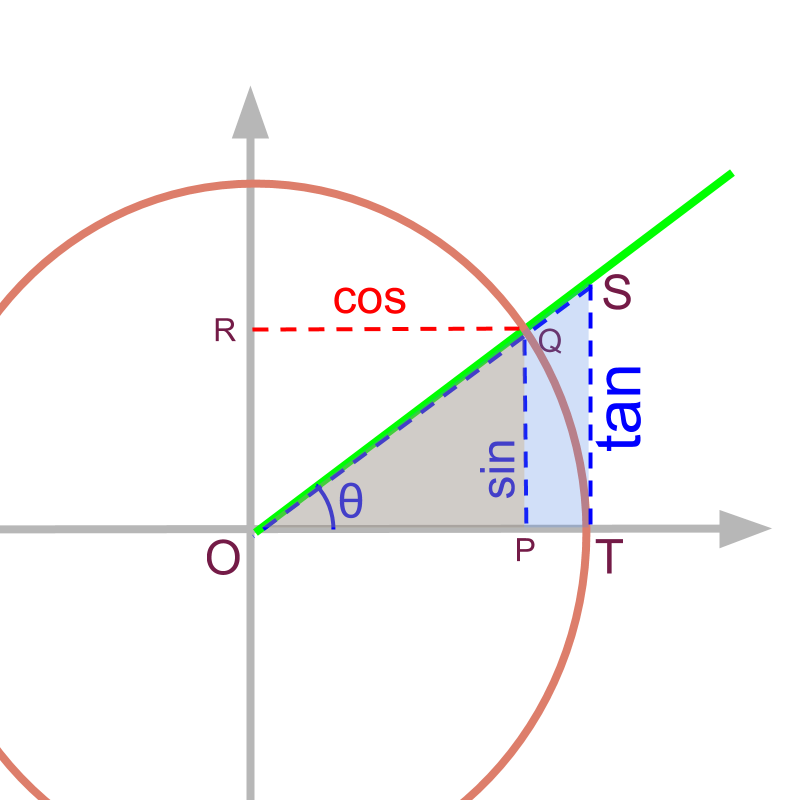
For a given angle , the is the length of the line segment on tangent as shown in figure.
is the short form of 'tangent'.
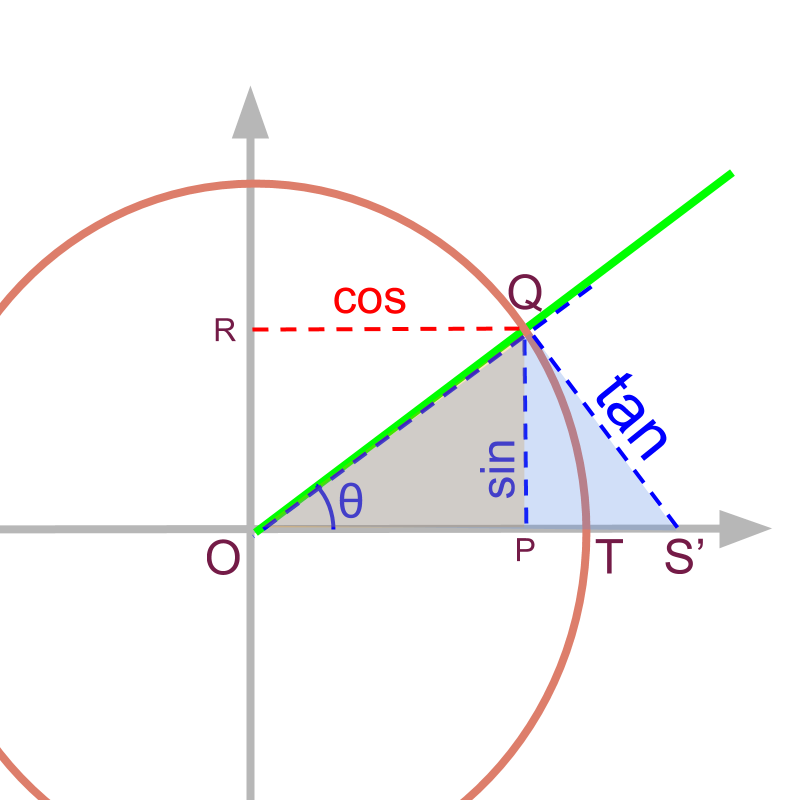
The of an angle is equivalently given as as shown in figure.
Note the following:
and are similar triangles and so
so,
line cutting the circle
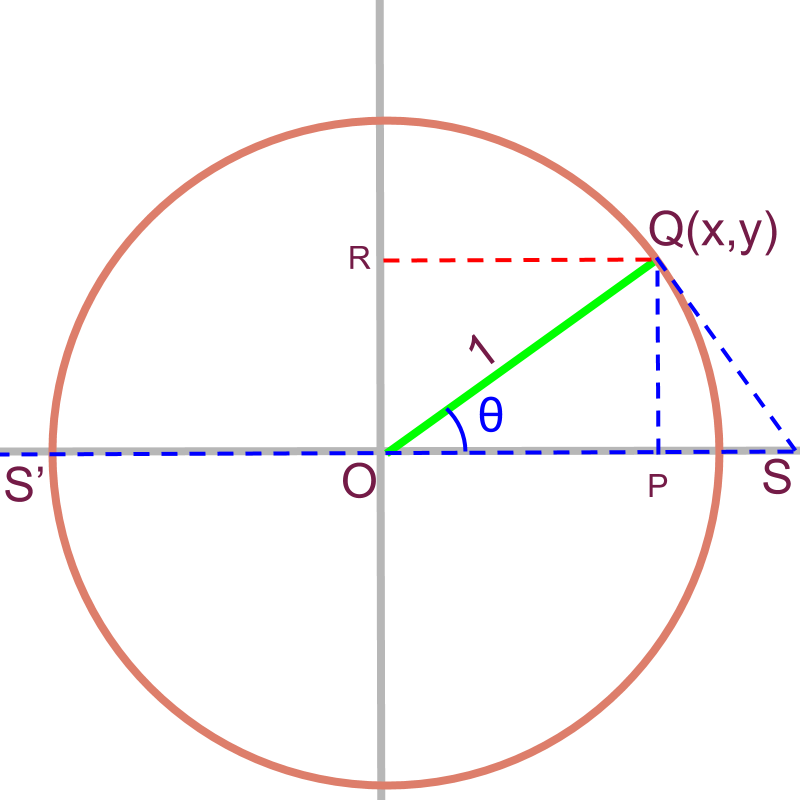
Consider the line . It is a secant to the circle.
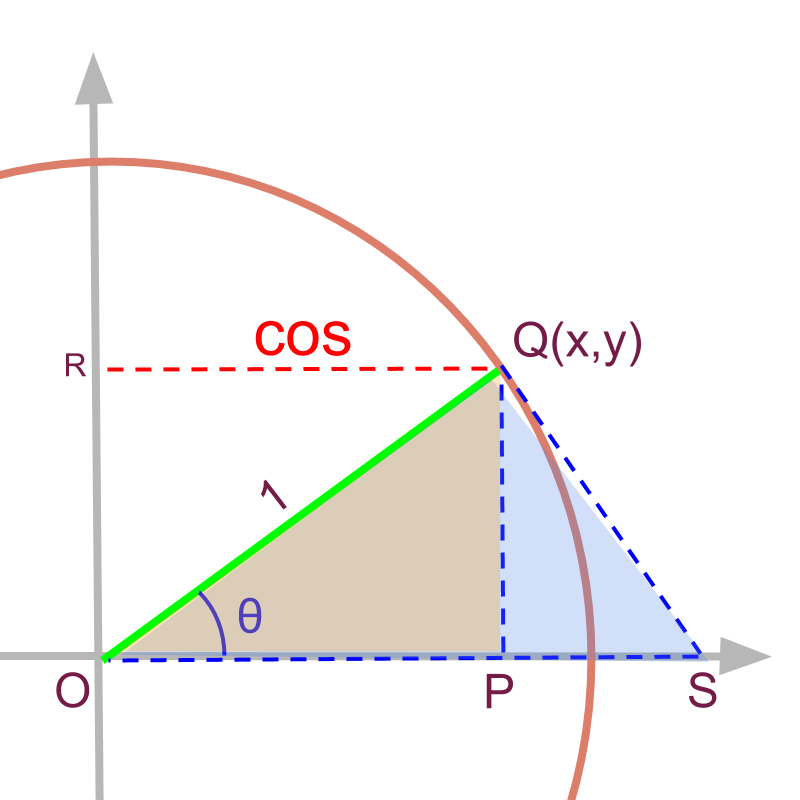
Consider the circle with part of the secant
and are similar right angled triangles.
So for the triangles are equal.
Substitute , and
the line segment
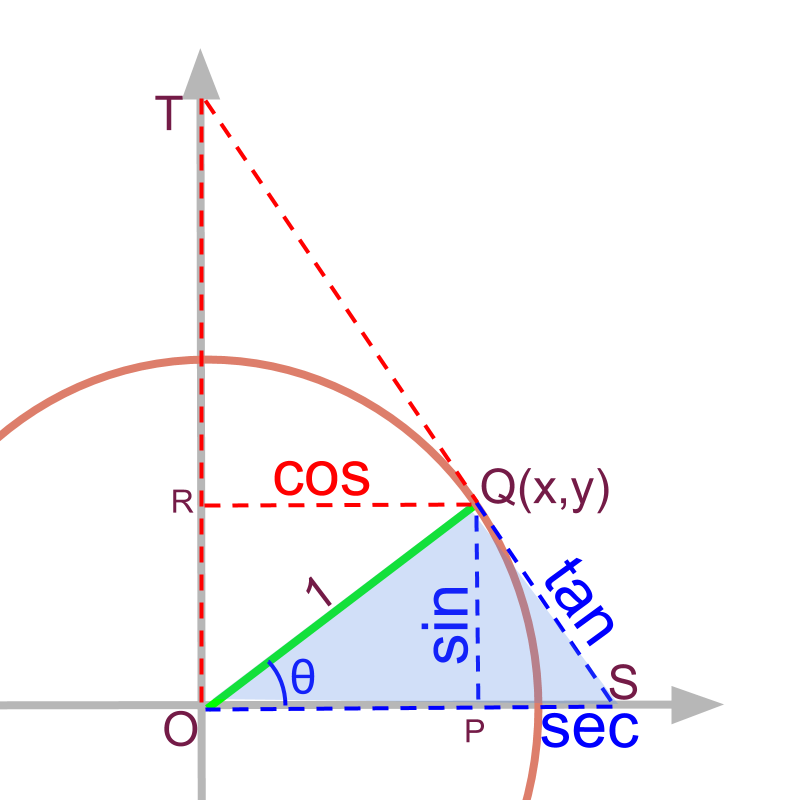
The trigonometric value corresponding to is .
cosecant
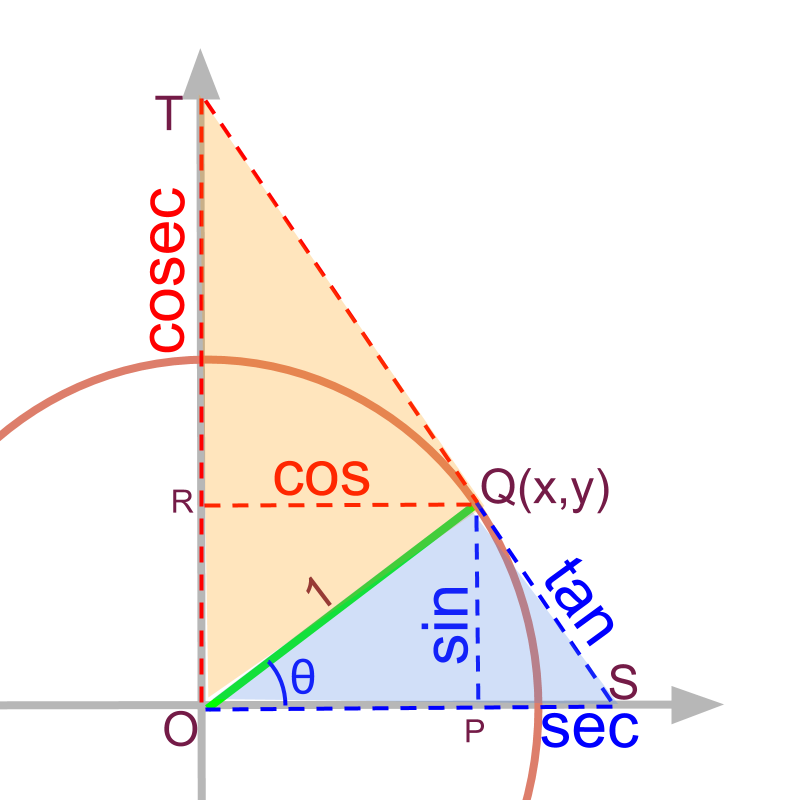
The secant for the complementary angle of theta is as given in the figure. It is noted that and are similar right-angled-triangles.
Ratio of corresponding sides are equal
substitute and
The line segment
The trigonometric value corresponding to is .
cotangent
The tangent for the complementary angle of theta is as given in the figure.
It is noted that and are similar right-angled-triangles.
ratio of corresponding sides are equal
substitute , and .
The

The trigonometric value corresponding to is .
trigonometric values
The trigonometric values for a given angle is defined as lengths in relation to
• chord or sine :
• tangent :
• secant :
all the above for complementary angle
• co-sine :
• co-tangent :
• co-secant : or
summary

Trigonometric Values: For a line segment of unit length at the angle
The point on unit circle for given angle is .
Note: and are the projections on -axis and -axis.
• chord or sine :
• tangent :
• secant :
For complementary-angle
• co-sine :
• co-tangent :
• co-secant : or
Outline
It is advised to do the firmfunda version of "basics of Trigonometry" course before doing this.
The outline of material to learn "Advanced Trigonometry" is as follows.
Note: go to detailed outline of Advanced Trigonometry
→ Unit Circle form of Trigonmetric Values
→ Trigonometric Values in all Quadrants
→ Trigonometric Values or any Angles : First Principles
→ Understanding Trigonometric Values in First Quadrant
→ Trigonometric Values in First Quadrant
→ Trigonometric Values of Compound Angles: Geometrical Proof
→ Trigonometric Values of Compound Angles: Algebraic Proof
→ Trigonometric Values of Compound Angles: tan cot
→ Trigonometric Values of Compound Angles: more results